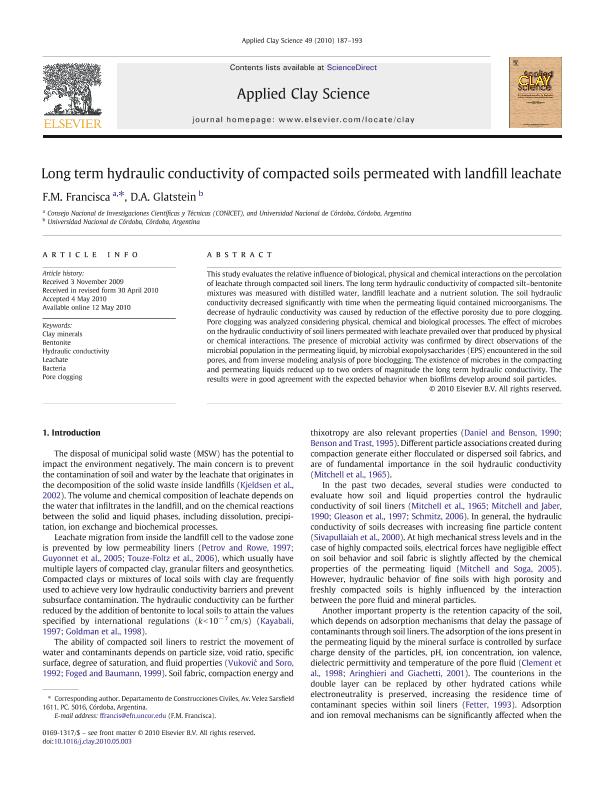Artículo
Long term hydraulic conductivity of compacted soils permeated with landfill leachate
Fecha de publicación:
07/2010
Editorial:
Elsevier Science
Revista:
Applied Clay Science
ISSN:
0169-1317
Idioma:
Inglés
Tipo de recurso:
Artículo publicado
Clasificación temática:
Resumen
This study evaluates the relative influence of biological, physical and chemical interactions on the percolation of leachate through compacted soil liners. The long term hydraulic conductivity of compacted silt-bentonite mixtures was measured with distilled water, landfill leachate and a nutrient solution. The soil hydraulic conductivity decreased significantly with time when the permeating liquid contained microorganisms. The decrease of hydraulic conductivity was caused by reduction of the effective porosity due to pore clogging. Pore clogging was analyzed considering physical, chemical and biological processes. The effect of microbes on the hydraulic conductivity of soil liners permeated with leachate prevailed over that produced by physical or chemical interactions. The presence of microbial activity was confirmed by direct observations of the microbial population in the permeating liquid, by microbial exopolysaccharides (EPS) encountered in the soil pores, and from inverse modeling analysis of pore bioclogging. The existence of microbes in the compacting and permeating liquids reduced up to two orders of magnitude the long term hydraulic conductivity. The results were in good agreement with the expected behavior when biofilms develop around soil particles.
Palabras clave:
BACTERIA
,
BENTONITE
,
CLAY MINERALS
,
HYDRAULIC CONDUCTIVITY
,
LEACHATE
,
PORE CLOGGING
Archivos asociados
Licencia
Identificadores
Colecciones
Articulos(CCT - CORDOBA)
Articulos de CTRO.CIENTIFICO TECNOL.CONICET - CORDOBA
Articulos de CTRO.CIENTIFICO TECNOL.CONICET - CORDOBA
Citación
Francisca, Franco Matias; Glatstein, Daniel Alejandro; Long term hydraulic conductivity of compacted soils permeated with landfill leachate; Elsevier Science; Applied Clay Science; 49; 3; 7-2010; 187-193
Compartir
Altmétricas




